
The Art of HarpInternational Harp Festival Vol 1Introduction by Rüdiger Oppermann
The harp is considered to be the oldest instrument known to mankind. It exists in varied forms throughout the world. The first form of the harp, the Bow Harp (developed from the hunting bow), is the most ancient ancestor of all stringed instruments. Harps have been present in hundreds of forms for thousands of years) Diverse cultures and centuries have brought about a multitude of possible constructions, styles and timbres. This new CD series "The Art of Harp" Is the most comprehensive collection of harp styles ever. We're crossing over all the traditional boundaries by presenting everything from ethnic-music (in new, digital geld recordings of previously unknown harp cultures) to classical harp solos, folk, pop. jazz-harp and other styles. Some of these musicians have appeared in the annual "International Harp festivals" that I've organized in Germany for the past 17 years. These harp festivals began in a few small clubs and developed into international events with thousands of listeners and sister-festivals in Italy and the USA. We hope that this album brings across some of the delight that we experience with the harp. |
|
Gráinne Hambly - 2 tracksT Check out Gráinne's Website. Malamini Jobarteh - 2 tracks
Deborah Henson-Conant - 2 tracks
The Naguru Adungu Troupe - 2 tracks
The musicians on this recording live in Naguro, a part of the capital city Kampala. Kristen Nogues - 2 tracks
Cynthia Mowery - 2 tracks
Her comments on this Prelude: J. S. Bach (1685-1750) originally composed this memorable Prélude as the introduction to the "Partita in E major" (BWV 1006) for solo violin. Many years later he arranged the same work as a "Suite in E Major" (BWV 10060), intended for a harmony instrument. Almut Kirchner - 1 track
The harpist who conquers the dizzying technique of reaching through one row of strings on the Arpa Doppia to get to the chromatically tuned half-steps must be dedicated indeed! No wonder the Single- Action Pedal Harp was greeted as a welcome replacement for earlier attempts at chromaticism. In Wales a harp with no less than three rows of strings was developed Out of the idea of the Italian Arpa Doppia still being used for Welsh folk music today. Almut Kirchner studied voice with Ingeborg Most and Elisabeth Jungblut and Baroque Harp with Andrew Lawrence-King, England. Professionally she works in the field of environmental protection and has a degree in molecular physics, which must be of help in finding the proper strings on the Arpa Doppia! Margot Krimmel - 2 tracks
|
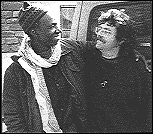 "ln these changing times it's important that we musicians
get together. We have a common language! With this privilege
we have the chance to experience cultural understanding. To
practice equality in communication we must first discover
the basis for each new culture that we face. For a musician
this means being open to difterent tunings and rhythms,
understanding other structures and melodies, and developing
another feeling for time. We must learn to ask the right
questions and to listen with new ears."
"ln these changing times it's important that we musicians
get together. We have a common language! With this privilege
we have the chance to experience cultural understanding. To
practice equality in communication we must first discover
the basis for each new culture that we face. For a musician
this means being open to difterent tunings and rhythms,
understanding other structures and melodies, and developing
another feeling for time. We must learn to ask the right
questions and to listen with new ears."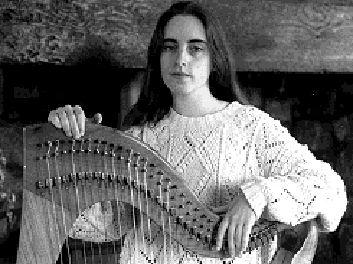 he
harp is the national symbol of Ireland. Gráinne
Hambly is a young Irish harper from Mayo. She performs
traditional Irish dance pieces on a Neo-Irish Harp (with
nylon strings).
he
harp is the national symbol of Ireland. Gráinne
Hambly is a young Irish harper from Mayo. She performs
traditional Irish dance pieces on a Neo-Irish Harp (with
nylon strings).
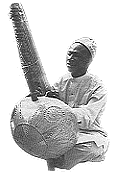 Malamini
Jobarteh is the Grand Old Man of the Kora in Gambia son of
the legendary Albali Bai Konte. He in a world traveler - the
musical ambassador of his country. He plays the Kora and
sings for weddings, rites of passage and other ceremonies.
Malamini improvises here engagingly on the theme of
"Kelefa", a heroic Mandikan warrior.
Malamini
Jobarteh is the Grand Old Man of the Kora in Gambia son of
the legendary Albali Bai Konte. He in a world traveler - the
musical ambassador of his country. He plays the Kora and
sings for weddings, rites of passage and other ceremonies.
Malamini improvises here engagingly on the theme of
"Kelefa", a heroic Mandikan warrior.
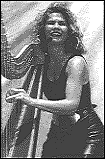 Deborah
Henson-Conant is today's foremost jazz harpist. After
classical training she began arranging pop and jazz
standards for the harp in the 1980s. Deborah now composes
her own songs and accompanies herself on an electrically
amplified "Concert Harp". By making unique use of the
double-action pedal system she produces "blue notes" with
virtuosic foot-work. "Coqueta" developed in collaboration
with the guitarist and the percussionist of her band.
Deborah
Henson-Conant is today's foremost jazz harpist. After
classical training she began arranging pop and jazz
standards for the harp in the 1980s. Deborah now composes
her own songs and accompanies herself on an electrically
amplified "Concert Harp". By making unique use of the
double-action pedal system she produces "blue notes" with
virtuosic foot-work. "Coqueta" developed in collaboration
with the guitarist and the percussionist of her band.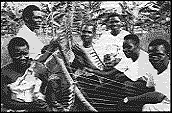 The
Adungo (from the family of Bow Harps) is the most popular
instrument of the Alur, a tribe residing in the border
territory between Uganda, Zaire and Sudan. They migrated to
this area about 400 years ago thus bringing the ancient
music with them. A grooving Adungu band transports the
dancers and listeners into an ecstatic frenzy in no time at
all.
The
Adungo (from the family of Bow Harps) is the most popular
instrument of the Alur, a tribe residing in the border
territory between Uganda, Zaire and Sudan. They migrated to
this area about 400 years ago thus bringing the ancient
music with them. A grooving Adungu band transports the
dancers and listeners into an ecstatic frenzy in no time at
all.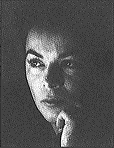 Influences of traditional Breton tunes, French
Impressionism and the "avant garde" can be heard in Kristen
Nogues' unique compositions for her instrument, the small,
nylon strong Celtic Harp. The lyrics of this strangely
macabra lullaby come from the 19th century. A household
servant who must stay at home to care for a child while the
parents go out dancing.
Influences of traditional Breton tunes, French
Impressionism and the "avant garde" can be heard in Kristen
Nogues' unique compositions for her instrument, the small,
nylon strong Celtic Harp. The lyrics of this strangely
macabra lullaby come from the 19th century. A household
servant who must stay at home to care for a child while the
parents go out dancing.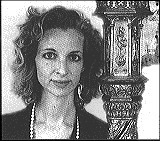 Cynthia
Mowery is principal harpist of the Baden-Baden Philharmonic
in Germany. Bom in New York she studied with Alice Chalifoux
at the Oberlin College Conservatory of Music. After working
for the National Symphony Orchestras of Costa Rica and
Venezuela Cynthia made Europe her home.
Cynthia
Mowery is principal harpist of the Baden-Baden Philharmonic
in Germany. Bom in New York she studied with Alice Chalifoux
at the Oberlin College Conservatory of Music. After working
for the National Symphony Orchestras of Costa Rica and
Venezuela Cynthia made Europe her home.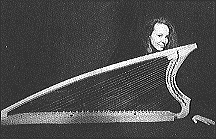 Almut
Kirchner practices an art which, although once widely spread
in all of Europe, can rarely be heard today. She sings the
art songs from the Medieval to the Baroque Period
accompanying herself on a harp with two rows of strings.
Almut
Kirchner practices an art which, although once widely spread
in all of Europe, can rarely be heard today. She sings the
art songs from the Medieval to the Baroque Period
accompanying herself on a harp with two rows of strings.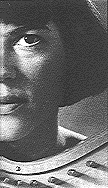 Margot
Krimmel does with the harp what Joni Mitchell did with her
guitar: She composes new, catchy songs in a folksy-jazz
style, sings and accompanies herself. She plays on a
Tyrolean folk Harp with a single-action pedal system. The
rhythmical metallic sounds at the beginning and end of the
piece were produced by plucking on the wire connecting
cables within the body of the harp!
Margot
Krimmel does with the harp what Joni Mitchell did with her
guitar: She composes new, catchy songs in a folksy-jazz
style, sings and accompanies herself. She plays on a
Tyrolean folk Harp with a single-action pedal system. The
rhythmical metallic sounds at the beginning and end of the
piece were produced by plucking on the wire connecting
cables within the body of the harp!